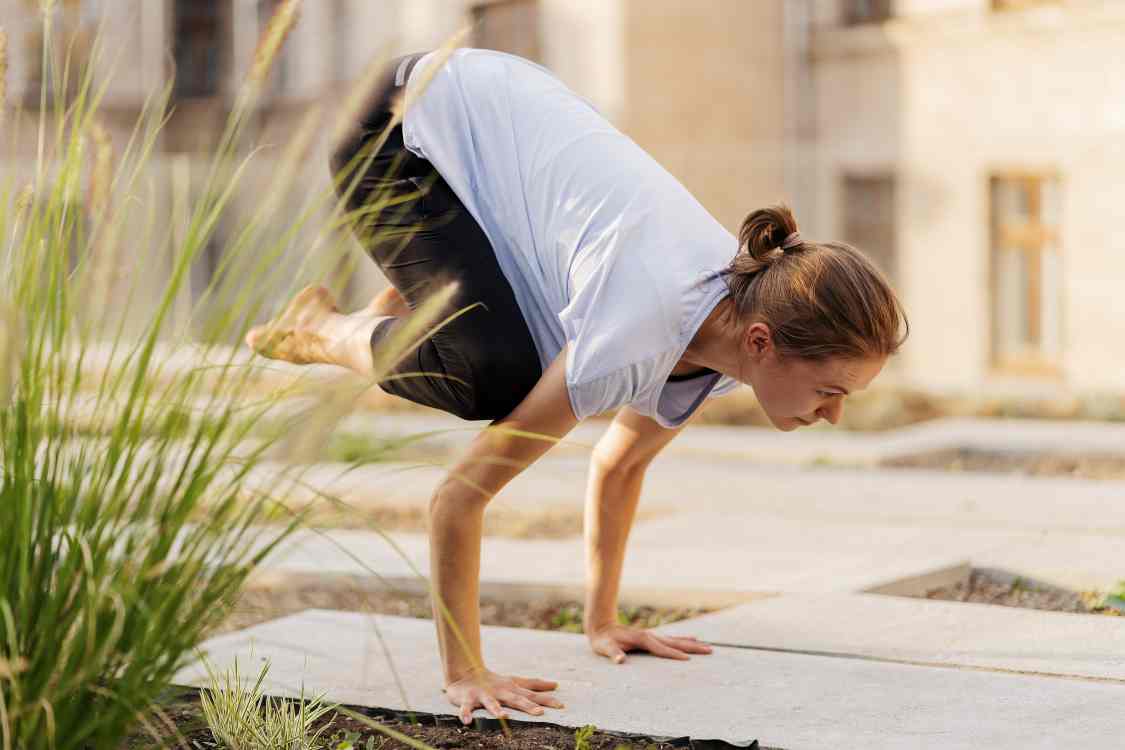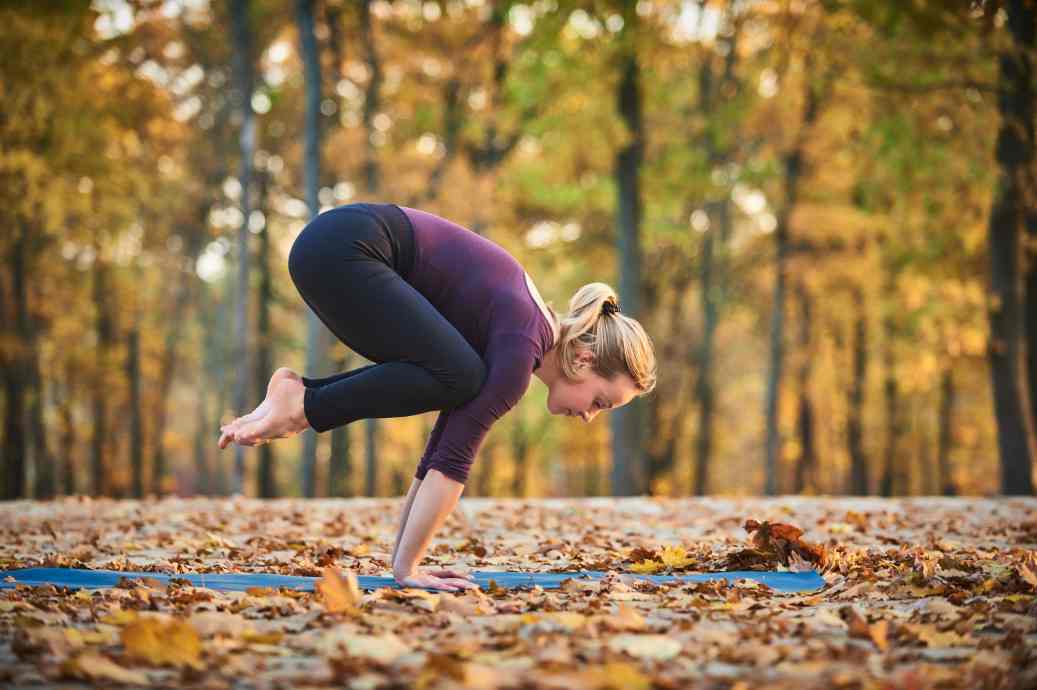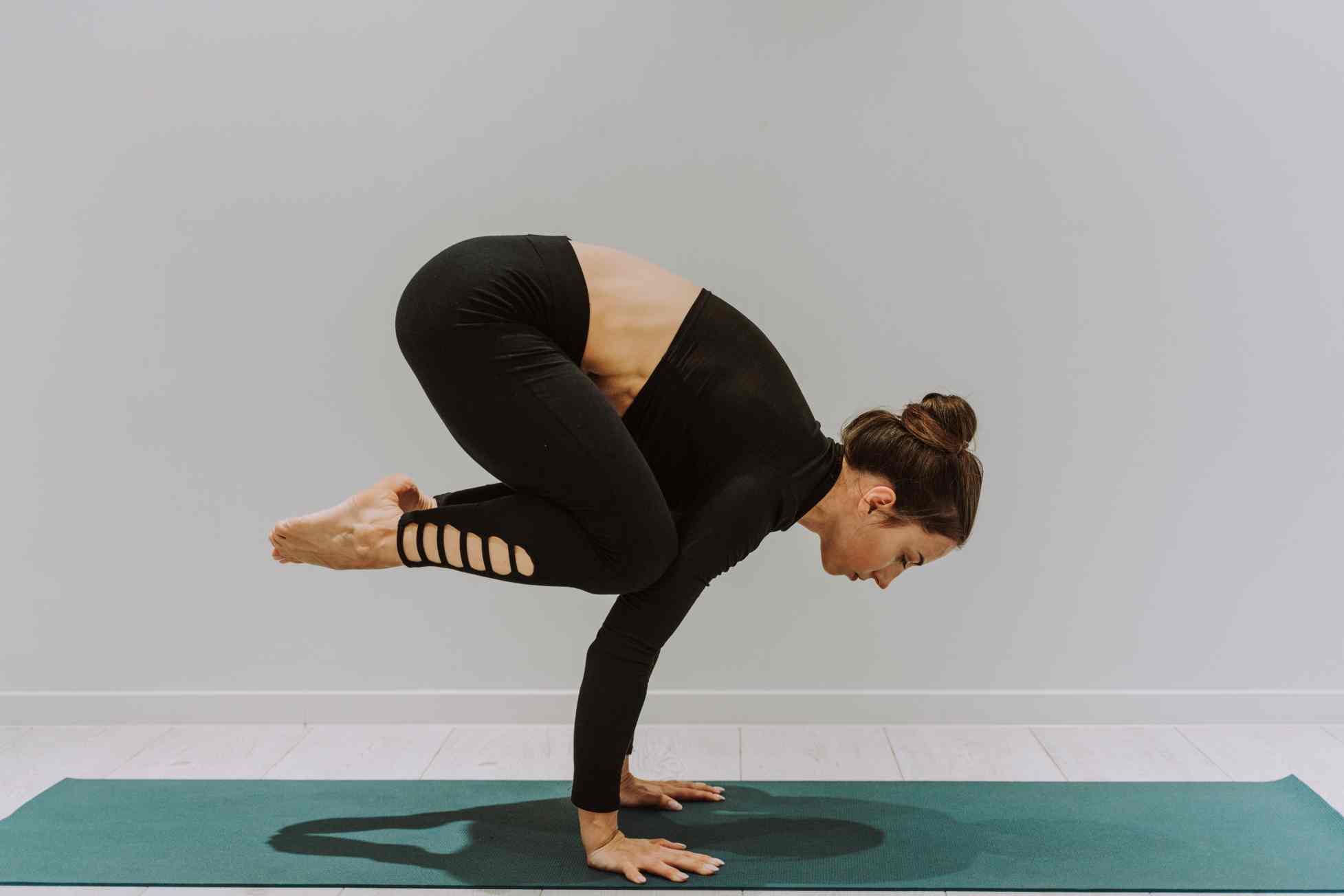How to Perform Crow Pose (Kakasana) & its Health Benefits

Incorporating the crow pose into your yoga routine can benefit your health. This dynamic arm balance pose strengthens the arms and shoulders, enhances core stability, and increases wrist flexibility. Additionally, it improves balance and coordination while fostering mental focus and concentration.
Regular practice can boost confidence and promote better body awareness, contributing to overall physical and psychological well-being. Crow pose encourages personal growth and resilience by challenging physical and mental limits. Its benefits extend beyond the mat, improving posture and everyday functional strength.

Table of Contents

What is a Crow Pose?

Kakasana is a balancing asana in modern yoga and hatha yoga. The name is derived from the Sanskrit words "Kaka", meaning crow, and "asana", meaning pose or posture. In addition, it is an arm balancing pose in which hands are planted on the floor, shins rest upon upper arms, and feet lift, resembling the shape of a crow.
This pose often needs clarification with the Bakasana or crane pose. Nevertheless, there are differences, as the crow pose is practised with bent arms, while the crane pose is practised with straight arms. Let us now look into some health benefits this yoga asana offers.
Yoga Level: Advanced
How to Perform Crow Pose?
Step 1: First, kneel and place your palms in front of your feet on your yoga mat. Spread your fingers wide, as you'll need all the support you can get.
Step 2: Then, put your lower body weight on the balls of your feet.
Step 3: Bring your knees up to the back of your upper arms.
Step 4: Place your weight on your hands and raise your head while executing this.
Step 5: Lift your feet off the mat (one at a time) while supporting your weight on your arms.
Step 6: While keeping your knees locked into your upper arms, you can support your thighs with your thighs.
Step 7: Then bring your feet up near the cheeks of your gluteal, and hold for as long as necessary or possible.
Step 8: Finally, exhale and carefully reposition yourself to land on your feet and stand straight.
Benefits of Doing Crow Pose Daily

The crow pose is a challenging arm balance pose in yoga that enhances strength, balance, and concentration. It offers numerous health benefits, including improved core strength, flexibility, and mental focus.
1. Strength
Crow pose strengthens various muscle groups. It targets your arms, wrists, core, upper back, shoulders, inner thighs, and hip flexors. This comprehensive engagement helps build overall body strength.
2. Flexibility
Practising the crow pose stretches several areas of the body. It enhances flexibility in your back, buttocks, quadriceps, and wrist flexors. Regular practice can lead to improved range of motion and reduced muscle tension.
3. Balance
Crow pose significantly improves balance. It challenges stability and helps you develop better coordination, which can be beneficial in yoga and everyday activities.
4. Focus
The pose demands a high level of concentration and focus. Maintaining balance and proper alignment in the crow can deepen your mental focus. This improved concentration can carry over to other areas of your life.
5. Body Awareness
The crow pose creates foundational body awareness. It encourages mindfulness of your body's position and movement. This heightened awareness can improve your overall yoga practice and physical activities.
6. Stress Relief
Practising the crow pose can relieve stress and anxiety. The focus and physical exertion involved help to calm the mind. This stress relief can contribute to better mental health and relaxation.
Incorporating the crow pose into your yoga routine can be a fantastic way to boost your overall health and well-being. Remember to start slow and prioritise safety with proper form and a soft practice area. Practising the crow pose daily can help you avoid getting hospitalised for a major issue. This way, your health insurance policy will also not be used, providing you with a cumulative bonus.
Safety Precautions to Take While Performing Crow Pose
- Set a Strong Foundation: The basis of any asana is the Tadasana or the mountain pose. It is the foundation of every yoga pose. So, always appreciate the need for your basic strength! Besides, your basics also enable you to build your pose safely and slowly while stabilising your posture. Since you are balancing on your hands in the Kakasana, they serve as the foundation.
- Contract Your Midline: Your adductor muscles are the most influential participants in Kakasana. When tightened, these muscles run along your inner thighs and draw the legs toward one another. Also, you must fully contract these muscles to take off and maintain lift. However, the easiest way to work the adductors is to hug your legs toward your body's midline.
- Use the Bandhas: The body is equipped with locks called bandhas that allow energy flow, or prana, which are meant to be released or constrained. For example, in the Kakasana, you restrict the power flow to the lower body to shift your weight against gravity. easier. However, the two main bandhas most beneficial for this posture are the Uddiyana and the Mula bandha. These locks establish a root basis and permit flight while performing the crow pose.
- Round Your Back: You may feel your core's strength when the bandhas are pulled tight. Moreover, in this regard, the core of each arm’s balance is the most crucial component. So, round your spine in the crow posture to activate your core and enhance your physical well-being.
- Elevate Your Glutes: Kakasana involves continuously pushing the floor away while allowing gravity to work in your favour. In this regard, keep your glutes high and press the ground away from you rather than letting your body sink toward the bottom. Then, as you slowly float into the crow pose, you can lead with your hips by pointing them upward.
- Look and Lean Forward: When performing Kakasana, keep your eyes forward. One myth of the crow pose is that people frequently think arm balances require considerable strength. Although arm strength is undoubtedly important, you must also know that practising these poses involves more than just using your strength to counterbalance your weight. If you lean forward far enough while maintaining strength and alignment, your legs will become light to the point where they lift off the ground.
What Are the Easy Modifications of a Crow Pose?
You can also perform Kakasana or crow pose with some simple modifications. A few of them are as follows:
- Use a Bolster: Put a bolster, pillow, or anything squishy (like a couch) in front of your face to overcome your anxiety about the Crow Pose. In this manner, if you fall forward, your face will not hit the ground.
- Use a Block: Try Crow Pose with a block beneath your feet to raise your butt, so you don't have to lean as far forward or bend your arms far. To see yourself fly, position yourself on the block, squat with your knees wide open, and then move into the Crow Pose.
- Use a Strap: A typical mistake in the Crow Pose is allowing your arms to spread out when entering the arm balance. To prevent this, you're often told to tighten your arms and wrap your triceps together to activate your shoulders and chest to increase stability. While it's crucial to practise the squeeze, if your arms have a habit of splaying out, you can use a strap. Utilising a strap makes it easier for you to reach the balance in Crow Pose and get accustomed to the feeling of balance.
- Keep Knees Outside the Triceps: If you are performing it for the first time, kneel by lowering your knees to the outside of your triceps to establish core stability and feel at ease balancing on your hands.
- Start With Baby Crow Pose: Baby Crow Pose is the ideal Crow Pose version to try if you have weak wrists. To find the equilibrium point in Baby Crow, you must balance on your forearms and round your spine. Additionally, being closer to the ground abates fear relative to being higher up on your hands.
So, it is evident Crow Pose (Kakasana) is a balancing pose and is also popular in Hatha yoga and modern yoga for exercises. However, if you are just starting your yoga journey, and you are facing difficulty, you can start with Marjaryasana, Utthan Pristhasana, Ardha Navasana etc., to increase your flexibility, and then proceed towards Kakasana.
Who Should Avoid Practising Crow Pose?
Crow pose is only for some due to the demands on your body. Here are some people who should avoid practising crow pose:
- Pregnant Women: Due to the risk of falling and the increased strain on the abdominal muscles, pregnant women are generally advised to avoid the crow pose. The balance required can lead to falls, which may harm both mother and baby.
- Individuals with Wrist Injuries: Crow pose places significant pressure on the wrists, making it unsuitable for those with wrist injuries or conditions like carpal tunnel syndrome. Practising this pose can exacerbate pain and further injure the wrist. Alternative poses that don't stress the wrists are better options.
- People with Shoulder Injuries: The pose requires substantial shoulder strength and stability, which can pose a risk for individuals with shoulder injuries or weaknesses. Performing the crow pose can worsen existing shoulder problems. These individuals should focus on rehabilitative exercises before attempting such challenging poses.
- Those with Recent Surgeries: Anyone recently undergoing surgery, particularly in the wrists, shoulders, or abdominal area, should avoid the crow pose. The strain from this pose can interfere with the healing process. It is crucial to wait until fully healed and cleared by a healthcare professional.
- Individuals with High Blood Pressure: As an arm balance pose, the crow pose can increase blood pressure. Those with hypertension should be cautious and consult a doctor before attempting this pose. Alternatives that do not elevate blood pressure should be considered.
- People with Balance Issues: Crow pose requires a good sense of balance, which can be challenging for individuals with balance disorders or vertigo. The risk of falling and injury is high. Such individuals should practice balance-improving exercises before attempting advanced poses like crow.














